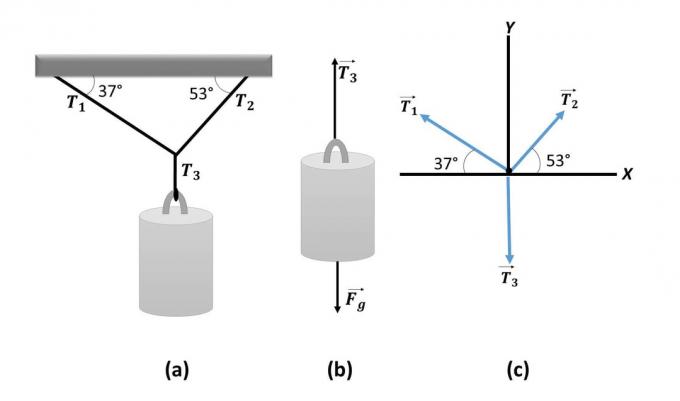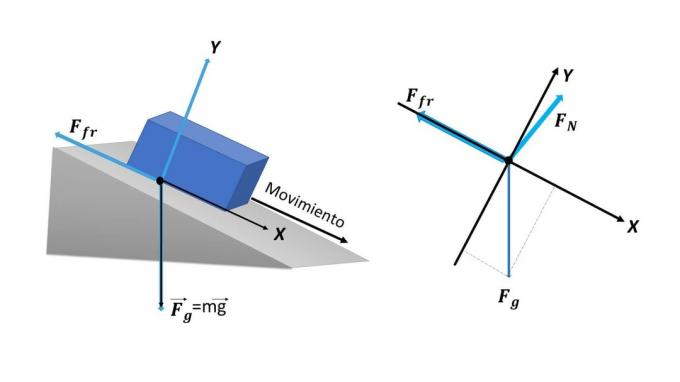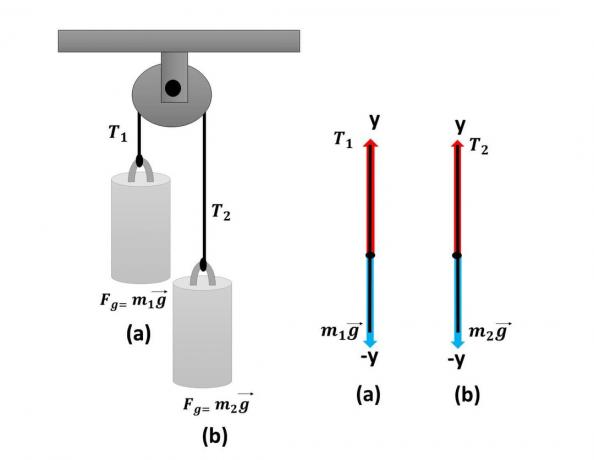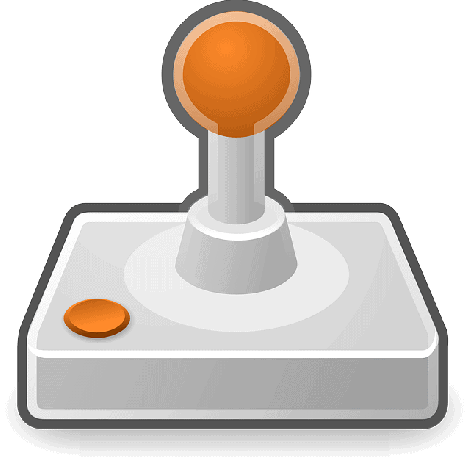A free body diagram is a graphic representation that allows to represent in a simple way the forces of physics that are exert on a free body, such as gravity, tension, friction, among others, representing them in plane vectors Cartesian.
The free body diagram, also known as forces diagram, is a graphic representation commonly used by physicists and engineers to represent the forces that are exerted on a certain body.
In this article you will find:
What is the free body diagram and what is it useful for?
These free body diagrams are a graphical representation implemented to represent the forces of physics that are exerted on a free body or mass subject to certain conditions.
Advertisements
What is the free body diagram useful for? It is useful in the field of engineering and the study of physics
It is widely used in engineering to calculate the influence of certain forces on an infrastructure. and prevent their collapse, making them more resistant.
Advertisements
How is a free body diagram drawn?
To draw the free body diagram, it is first necessary draw a sketch that graphically represents the forces that are exerted on a body or mass.
From this sketch, it is carried out in the Cartesian plane a graphical representation of these Vector forces.
Advertisements
Each vector or line that is drawn in the plane reflects the direction and magnitude of each force exerted and only the forces must be reflected in the plane that under real circumstances is subjected to a body, such as drag, gravitational, friction or others.
For it, there must be a problem to analyze, which, under simplified assumptions in the graph, this problem can be solved by observing and understanding the level of affectation of the forces exerted.
Advertisements
For diagram sketch purposes you can use tools like Microsoft Office PowerPoint.
However, for professional use where it is required to specify the magnitude of each force in the plane entering the exact measurements of each vector, it is recommended to use tools likegeogebra.
Advertisements
1. Free Body Diagram Example
This is a simple example to represent a free body diagram in which in the section (to) In the image, a mass suspended from a rope is observed.

Two forces act on the suspension., one of them is force exerted by weight from the body to the center of the earth by the effects of gravity, which is expressed in the section (b) as fg and the other is the other force, the tension in the rope exerted upward to prevent the mass from falling expressed as T3.
To represent it in the Cartesian plane, all you have to do is Draw the lines at the same angle and direction in which each tension force is exerted.
A straight line is drawn on the ordinate axis. 37° to represent the tension of the string T1, the line of the chord is drawn on the abscissa axis T2 at an angle of 53° and the third string is drawn vertically downward to represent the tension of the string T3 exerted by the weight of the mass.
2. Free Body Diagram Example
In order to represent the forces exerted on a body, sometimes it is necessary to rotate the plane in order to correctly represent the conditions to which the body or mass is subjected.
In this particular case, it is the forces to which a body is subjected when under conditions of a slope, as it could be a car going up a sloping street.

As seen in the graph, the force exerted by weightfgtowards the center of the earth will always have the same straight and vertical orientation, regardless of the tilting conditions to which the body is subjected.
As to the force of natureFN, is the force that the surface exerts on the body that rests on it, whether it is a car on an inclined track, the car taking the same perpendicular shape to the surface.
Also in this case there is friction forceffr, or contact, that is generated between the surface of the slope and the body, but unlike the normal force, this will opposite to the motion and parallel to the surface.
3. Free Body Diagram Example
It should be noted that to make a representation of a free body diagram where there are more than two bodies it is necessary to make two separate graphs, in order to represent the forces that are exerted on each one.
As can be seen in the following image, two bodies or beams are suspended by a pulley, in which as one goes down the other goes up and vice versa.

In each of the bodies or beams suspended by the rope there are two forces that are the tensile force and weight force.
In the same way, this representation is reflected in the lines (a and b), in which the force of tension and weight are exerted in the opposite direction on the axis AND, being the tension force represented as a positive vector in axisAND, and the weight force represented with a vector or line with negative direction on the same axisAND.
4. Free Body Diagram Example
The following diagram shows the graphical representation of two bodies subjected to different forces in very similar situations. To do this, let's look at the following graph:

As can be seen, the body (to) is subject to ffriction forces and normal forces when in contact with a surface, it is likewise affected by the tensile and weight forces.
However, the same situation does not occur with the body (b) in which only two intervene forces, the tension and the force of the weight.


